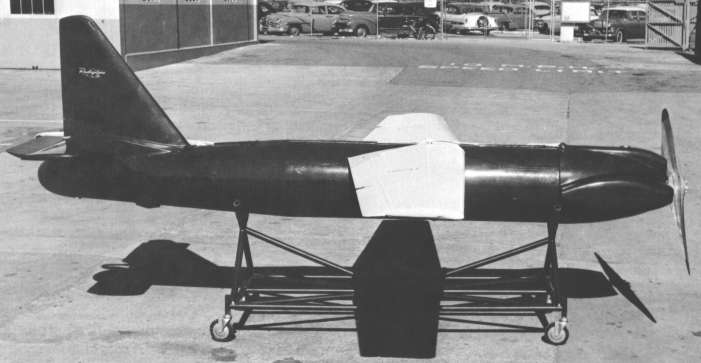Radioplane Q-10
During 1952, Radioplane designed the model RP-62 as a derivative of the OQ-19 family. To evaluate the possibility of constructing a target drone mainly from non-strategic materials, the RP-62 replaced the conventional metal construction with plastic and fiberglass in several parts of the airframe. Five RP-62 vehicles were built for the USAF as XQ-10, and were tested during 1954.
 |
| Photo: Northrop |
| XQ-10 |
Like the OQ-19, the XQ-10 could be ground or air launched and was recoverable by parachute. Compared to a conventional aluminum airframe, the plastic had a smoother external finish and the aerodynamic performance of the XQ-10 was about 10% higher than that of an OQ-19D with similar power and weight. However, the advantages apparently did not warrant large-scale production, and the Q-10 program was terminated after the XQ-10 tests.
Specifications
Note: Data given by several sources show slight variations. Figures given below may therefore be inaccurate!
Data for XQ-10:
| Length | 3.45 m (11 ft 4 in) |
| Wingspan | 3.51 m (11 ft 6 in) |
| Diameter | 41 cm (16 in) |
| Height | 1.04 m (3 ft 5 in) |
| Weight | 175 kg (385 lb) |
| Speed | 359 km/h (223 mph) |
| Propulsion | McCulloch O-100-1 piston engine; 54 kW (72 hp) |
Main Sources
[1] Richard A. Botzum: "50 Years of Target Drone Aircraft", Northrop, 1985
[2] "XQ-10 Characteristics Summary", USAF, 1 March 1955
Back to Directory of U.S. Military Rockets and Missiles, Appendix 1
Last Updated: 19 March 2003